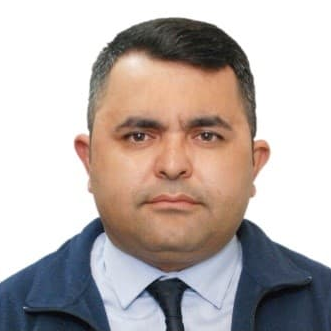New Challenges Arising in Engineering Problems with Fractional and Integer Order II
A special issue of Fractal and Fractional (ISSN 2504-3110). This special issue belongs to the section "Engineering".
Deadline for manuscript submissions: closed (1 September 2022) | Viewed by 28888
Special Issue Editors
Interests: partial differential equations; fractional calculus; analytical methods; numerical methods; mathematical physics
Special Issues, Collections and Topics in MDPI journals
Interests: fractional calculus; analytical and computational methods; differential and difference equations; real and complex analysis; applied and computational mathematics; mathematical physics
Special Issues, Collections and Topics in MDPI journals
Interests: time series based on wavelets; analysis of solutions in the field of physical-mathematical models of rheological media; fractional calculus; mathematical models in economics and finance; physical-mathematical models for biological media and applications to biotechnological and medical sciences
Special Issues, Collections and Topics in MDPI journals
Special Issue Information
Dear Colleagues,
Recently, many new models have been developed that deal with real-world problems that are seen as serious threats to the future of humankind. This comes from modeling events observed in various fields of science, such as physics, chemistry, mechanics, electricity, biology, economy, mathematical applications, and control theory. Moreover, research conducted on fractional ordinary or partial differential equations and other relevant topics relating to integer order have attracted the attention of experts from all over the world.
The focus of this Special Issue will be on reviewing new developments based on fractional differentiation and integration, both with respect to theoretical and numerical aspects.
This Special Issue is a place for experts to share new ideas on theories, applications, and numerical and analytical methods and simulations of fractional calculus and fractional differential equations, as well as integer order. Topics of interest are defined below, and submissions relating to relevant fields are welcome.
- New analytical and numerical methods to solve partial differential equations
- Computational methods for fractional differential equations
- Analysis, modeling, and control of phenomena in the following:
- Electrical engineering
- Fluids dynamics and thermal engineering
- Mechanics
- Biology
- Physics
- Applied sciences
- Computer science
- Engineering problems
- Deterministic and stochastic fractional order models
This Special Issue is organized together with the 6th International Conference on Computational Mathematics and Engineering Sciences (CMES-2022) (20–22 May 2022, Ordu, Turkey); hence, participants in CMES-2022 are especially welcome to submit their contributions. However, this Special Issue will accept contributions from all authors, not just conference participants.
Prof. Dr. Haci Mehmet Baskonus
Prof. Dr. Luis Manuel Sánchez Ruiz
Prof. Dr. Armando Ciancio
Guest Editors
Manuscript Submission Information
Manuscripts should be submitted online at www.mdpi.com by registering and logging in to this website. Once you are registered, click here to go to the submission form. Manuscripts can be submitted until the deadline. All submissions that pass pre-check are peer-reviewed. Accepted papers will be published continuously in the journal (as soon as accepted) and will be listed together on the special issue website. Research articles, review articles as well as short communications are invited. For planned papers, a title and short abstract (about 100 words) can be sent to the Editorial Office for announcement on this website.
Submitted manuscripts should not have been published previously, nor be under consideration for publication elsewhere (except conference proceedings papers). All manuscripts are thoroughly refereed through a single-blind peer-review process. A guide for authors and other relevant information for submission of manuscripts is available on the Instructions for Authors page. Fractal and Fractional is an international peer-reviewed open access monthly journal published by MDPI.
Please visit the Instructions for Authors page before submitting a manuscript. The Article Processing Charge (APC) for publication in this open access journal is 2700 CHF (Swiss Francs). Submitted papers should be well formatted and use good English. Authors may use MDPI's English editing service prior to publication or during author revisions.







